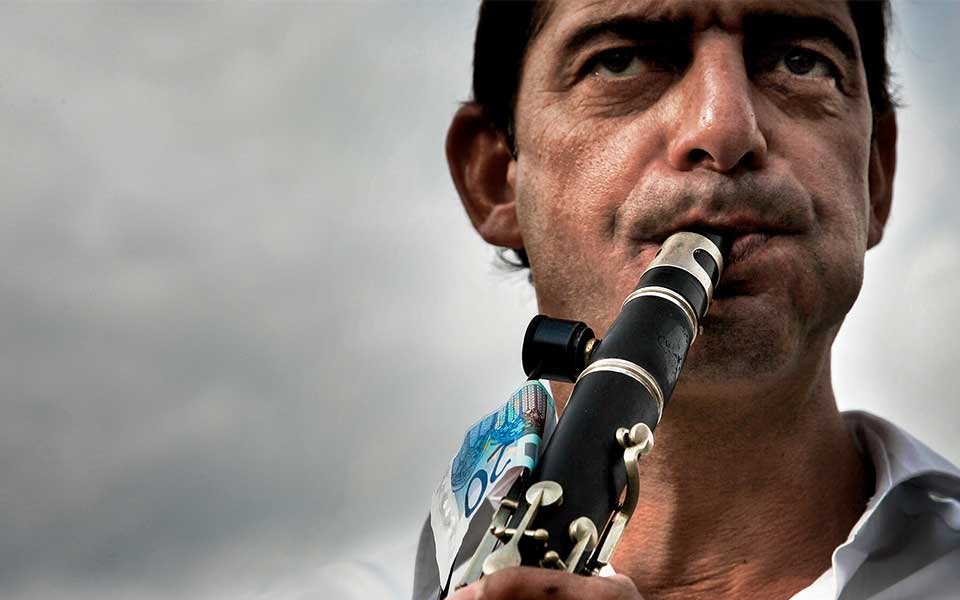
The clarinet player
A clarinet player performs at a cultural event organized in September 2009 in the village of Palamas, Karditsa, in honor of the Karagounides people of Thessaly – a Greek-speaking indigenous group from the plains of Thessaly who are descended from ancient Thessalian tribes. The 20 euro bill on the musician’s clarinet was probably given to him by a spectator as a sign of appreciation for the band or a particular musician, as is common at festivals.
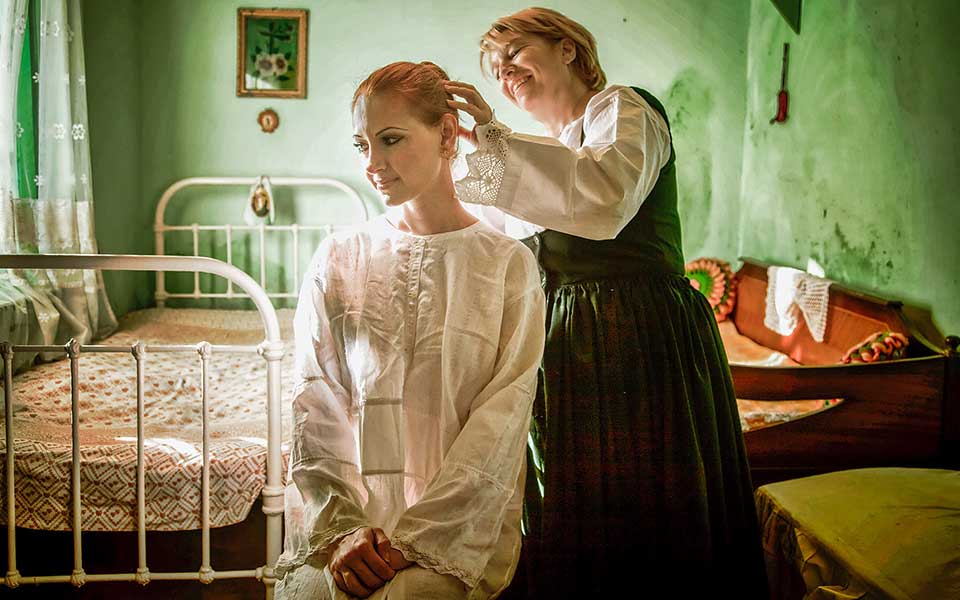
The preparation of the bride
The Arvanites, a Greek population group that originated in Albania, first came to the country in the Middle Ages and spread throughout southern Greece, mainly in the Peloponnese. The photograph depicts the preparation of an Arvanite bride in a traditional home on the island of Salamina in 2009. The bride’s hair was traditionally braided in a single plait, which she had to keep for 40 days. The shirt is made from thick silk from the island of Hydra.
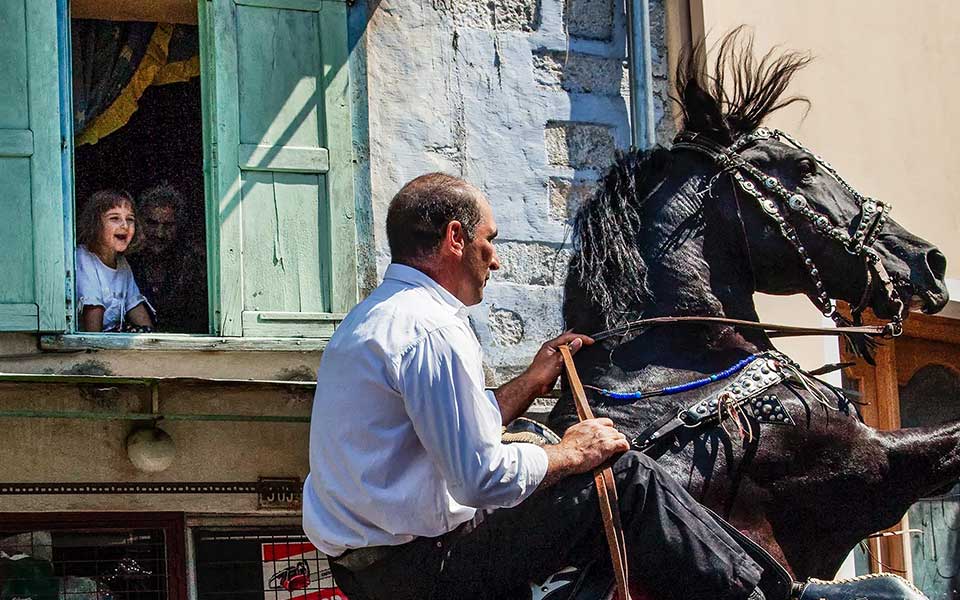
Proud horsemen
Every July 20 in the village of Agiasos on the slopes of Lesvos’ Mt Olympus, locals organize a three-day festival to mark the feast day of Prophet Elijah; the small chapel of Profitis Ilias, built in his name, stands on the mountain summit. In all the other parts of Greece, the prophet is depicted as “Elijah the Hermit,” an aged monk who lived in the desert. In Agiasos, however, locals consider him a horseman. This is why, on July 20 an icon of the saint is carried around the village streets, accompanied by decorated horses and their proud riders.
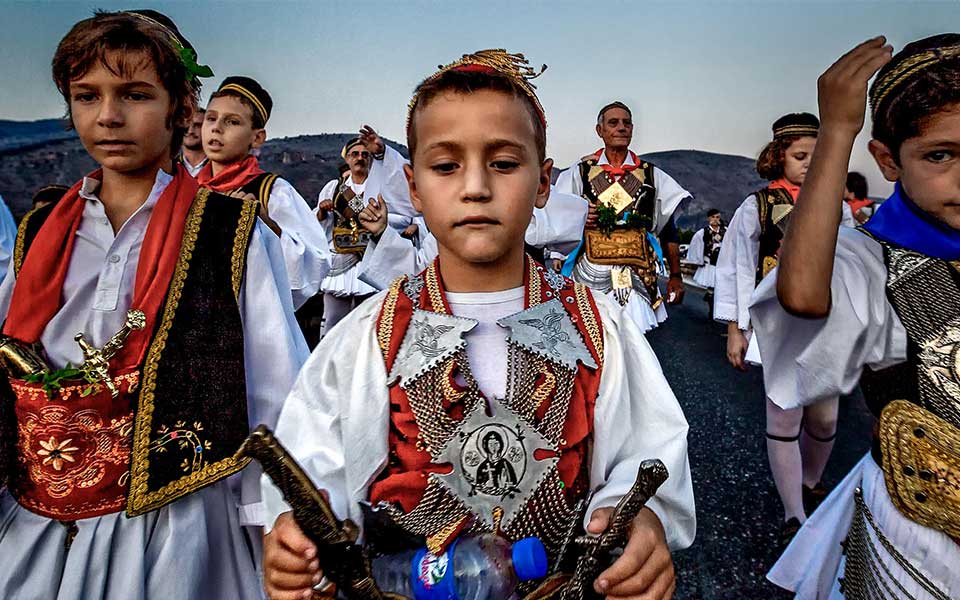
The entrance of the armed men
Every August 23 in the village of Aitoliko, in the region of Aetolia-Acarnania, children dressed as Greek War of Independence "armatole" fighters parade alongside adults for the “entrance of the armatoles” march. The parade is the climax of the three-day festival mainly dedicated to Saint Agatha, but which also commemorates all those who were lost in the revolutionary struggle of the Aetolians against Ottoman rule.
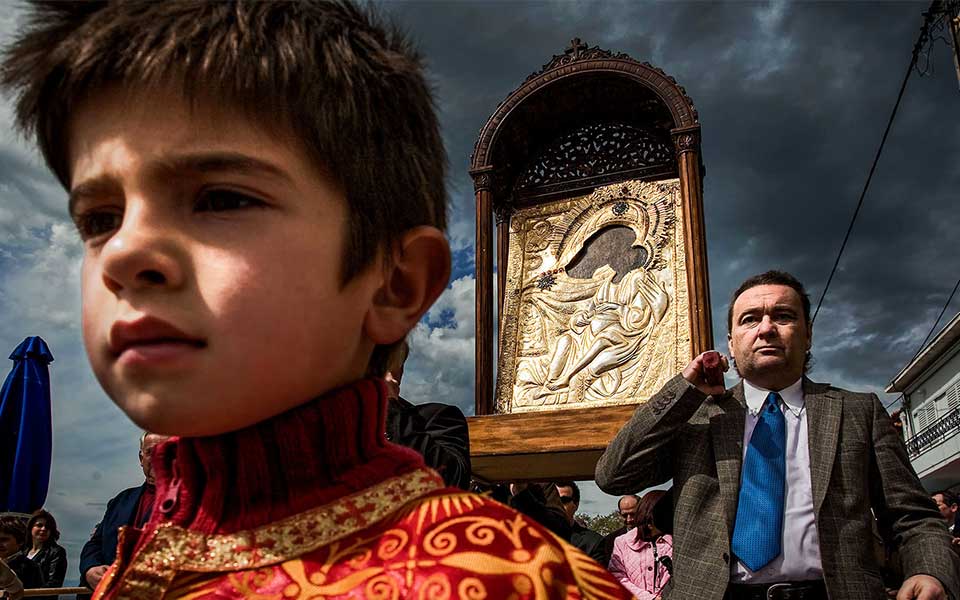
The Procession of the Virgin Mary
On September 8, the Nativity of the Virgin Mary, a procession of the "miraculous" icon of Panaghia Limnia (Our Lady of Limni) takes place in the town of Limni, in northern Evia. The icon is then returned to the parish church of the Nativity of the Theotokos (Mother of God), where it is kept. Food is traditionally distributed to the faithful as part of the celebrations.
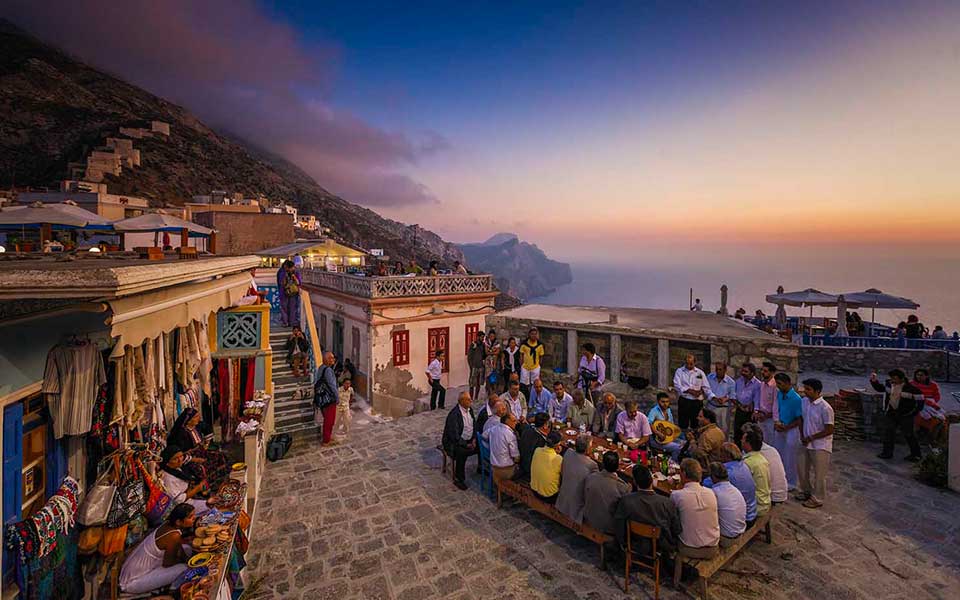
The slow dance
In village of Olympos in Karpathos, the festivities for August 15 – the Dormition of the Virgin Mary – do not consist of a frantic celebration like in other parts of Greece, but rather in a sober ritual that begins with a wooden table, on which bread, olives and pies are placed, along with some raki. A few men, some of them holding instruments, sitting around it begin to chant. Little by little, they are surrounded by more men, who hold each other with their arms crossed and begin a slow, “dragging” dance, going around in a circle. A second circle forms around the first circle, and a third one, and so on; together, they all keep dancing slowly until dawn.










